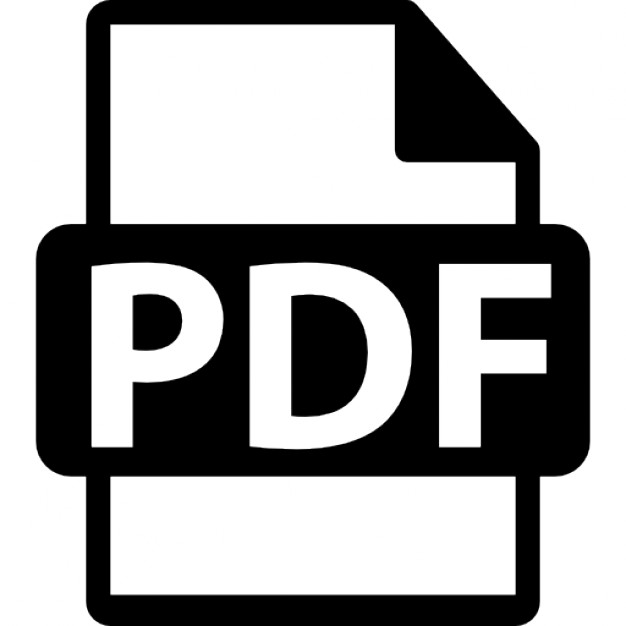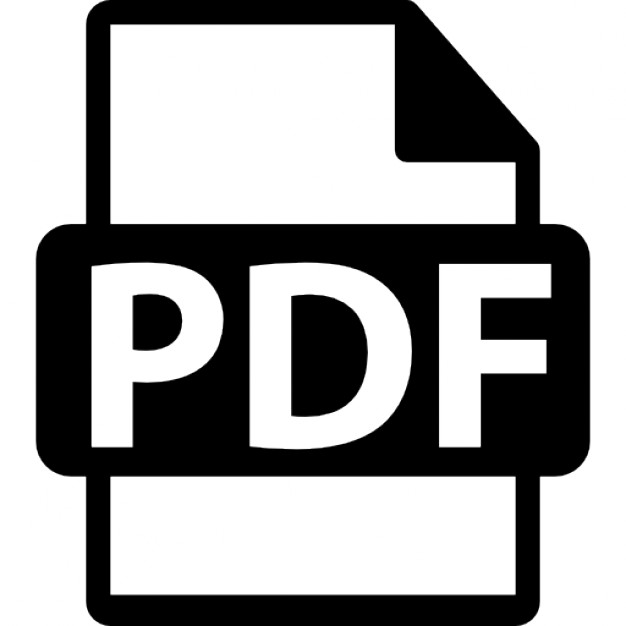- Email: [email protected]
Accepting the challenge
the back page Accepting the Challenge JAN ODOM, “
I
T’S LIFE, SIDDA. You just climb on the beast and ride.”1 That particular phrase seemed to jump off the page as I read Divine Secrets of the Ya-Ya Sisterhood by Rebecca Wells.1 How many times have I run into challenges over the years that seemed insurmountable or overwhelming? Now, when I feel particularly challenged, I remember the words of Sidda’s mother, Vivi, to “just climb on the beast and ride.” My latest challenge, of course, is accepting the position as Coeditor of the Journal of PeriAnesthesia Nursing. I have always felt such pride and respect for our association’s journal, known affectionately as the “green journal.” Editors of the past have put blood, sweat, and tears into every page and helped form the prestigious journal that we have today. The Journal of PeriAnesthesia Nursing has a legacy of capable and accomplished editors, and I follow in their footsteps with humility and eagerness. I step in as Denise O’Brien, the Interim Editor and my friend and colleague, steps out. I look forward to working with Vallire Hooper, another friend and colleague, who has been Managing Editor for the past year and continues as Coeditor. Thinking of my own challenges brought to mind some challenges that we, as perianesthesia nurses, face everyday in the clinical setting:
The ideas and opinions expressed in this editorial are those solely of the author and do not necessarily reflect the opinions of ASPAN, the Journal, or the publisher. Jan Odom, MS, RN, CPAN, FAAN, is a Clinical Nurse Specialist, Surgical Services, at Forrest General Hospital, Hattiesburg, MS. Address correspondence to Jan Odom, MS, RN, CPAN, FAAN, 3007 Raphael Dr, Hattiesburg, MS 39402; e-mail address: [email protected]. © 2001 by American Society of PeriAnesthesia Nurses. 1089-9472/01/1601-0012$35.00/0 doi:10.1053/jpan.2001.22133 62
MS, RN, CPAN, FAAN
● Competent care. The needs of our perianesthesia patients are growing more critical and more acute. Even in the ambulatory surgery setting, the patients are sicker and need more care. Technology has increased at an exponential rate. Our challenge is to stay up to date with the latest piece of technology, the latest research regarding the care of the patient in the perianesthesia setting, and maintain the knowledge and technical skills needed to care for our patients in a competent manner. ● High tech-high touch. John Naisbett in Megatrends2 reminded us back in 1982 that as our world becomes more and more driven by technology, we must balance that world for our patients with compassionate care. He called that care “high touch.” A family member of a long-term patient told me not long ago that one of the best pieces of advice he could offer is for the nurse to put herself or himself in the position of the patient or the patient’s family. I think he was calling for empathy as opposed to sympathy. He told the story of a nurse who took care of his family member who became so much more aware of the feelings of patients and families after her own father had to have open heart surgery. Our touch does makes a difference. President Reagan remembered the touch of a perianesthesia nurse who held his hand and spoke comforting words to him after his surgery in 1981. Our challenge is to remember to touch the patient who is in the midst of monitors, electrodes, tubes, and intravenous lines and to speak comforting words to the anxious family in the waiting room. ● Management of postoperative pain. Even with the new awareness of the importance of managing the patient’s pain and with all the new techniques and medications available,
Journal of PeriAnesthesia Nursing, Vol 16, No 1 (February), 2001: pp 61-62
ACCEPTING THE CHALLENGE over 50% of postoperative patients are still undermedicated for pain.3 More research is needed for objective criteria that will allow accurate pain assessment of the patient in the immediate perianesthesia area. Unfortunately, there is still too little education and in-depth knowledge regarding pain management among professional nurses—and that includes us. I think that sometimes we have taken the concept of objective-based criteria as opposed to time-based criteria for discharge from the PACU or ambulatory surgery area and used it only to move the patient faster along the system to discharge. We have failed at times to realize that although many patients are definitely ready for discharge before that magic “1 hour,” some patients are not ready to go just because the 1 hour has passed. Appropriate pain management before discharge of the patient is just as important as attaining an appropriate discharge criteria score or achieving normothermia. The challenge is to become knowledgeable about pain assessment in the perianesthesia setting, to become familiar with pharmacologic and nonpharmacologic methods of pain control,
61
and to free ourselves of preconceived ideas and judgments about the patient’s method of handling pain. These are just a few of the challenges that we face on a daily basis. We, at the Journal of PeriAnesthesia Nursing, are committed to bring you information and knowledge that will help you deal with those challenges and the many other challenges that are a part of perianesthesia nursing life. Let us hear from you. Tell us your needs. Write and share your expertise. Contact me at jodom29373@ aol.com to share a comment, ask a question, suggest a topic for an article, or better yet, to offer your talent and knowledge in the form of an article. When you answer, “Oh, no, not me—I can’t do that,” just remember the words of Vivi and “ . . . just climb on the beast and ride.”
REFERENCES 1. Wells R: Divine Secrets of the Ya-Ya Sisterhood. New York, NY, HarperCollins, 1996, p 326 2. Naisbitt J: Megatrends. New York, NY, Warner Books, 1982, pp 35-52 3. ASPAN: Standards of Perianesthesia Nursing Practice. Cherry Hill, NJ, ASPAN, 2000
I
T’S LIFE, SIDDA. You just climb on the beast and ride.”1 That particular phrase seemed to jump off the page as I read Divine Secrets of the Ya-Ya Sisterhood by Rebecca Wells.1 How many times have I run into challenges over the years that seemed insurmountable or overwhelming? Now, when I feel particularly challenged, I remember the words of Sidda’s mother, Vivi, to “just climb on the beast and ride.” My latest challenge, of course, is accepting the position as Coeditor of the Journal of PeriAnesthesia Nursing. I have always felt such pride and respect for our association’s journal, known affectionately as the “green journal.” Editors of the past have put blood, sweat, and tears into every page and helped form the prestigious journal that we have today. The Journal of PeriAnesthesia Nursing has a legacy of capable and accomplished editors, and I follow in their footsteps with humility and eagerness. I step in as Denise O’Brien, the Interim Editor and my friend and colleague, steps out. I look forward to working with Vallire Hooper, another friend and colleague, who has been Managing Editor for the past year and continues as Coeditor. Thinking of my own challenges brought to mind some challenges that we, as perianesthesia nurses, face everyday in the clinical setting:
The ideas and opinions expressed in this editorial are those solely of the author and do not necessarily reflect the opinions of ASPAN, the Journal, or the publisher. Jan Odom, MS, RN, CPAN, FAAN, is a Clinical Nurse Specialist, Surgical Services, at Forrest General Hospital, Hattiesburg, MS. Address correspondence to Jan Odom, MS, RN, CPAN, FAAN, 3007 Raphael Dr, Hattiesburg, MS 39402; e-mail address: [email protected]. © 2001 by American Society of PeriAnesthesia Nurses. 1089-9472/01/1601-0012$35.00/0 doi:10.1053/jpan.2001.22133 62
MS, RN, CPAN, FAAN
● Competent care. The needs of our perianesthesia patients are growing more critical and more acute. Even in the ambulatory surgery setting, the patients are sicker and need more care. Technology has increased at an exponential rate. Our challenge is to stay up to date with the latest piece of technology, the latest research regarding the care of the patient in the perianesthesia setting, and maintain the knowledge and technical skills needed to care for our patients in a competent manner. ● High tech-high touch. John Naisbett in Megatrends2 reminded us back in 1982 that as our world becomes more and more driven by technology, we must balance that world for our patients with compassionate care. He called that care “high touch.” A family member of a long-term patient told me not long ago that one of the best pieces of advice he could offer is for the nurse to put herself or himself in the position of the patient or the patient’s family. I think he was calling for empathy as opposed to sympathy. He told the story of a nurse who took care of his family member who became so much more aware of the feelings of patients and families after her own father had to have open heart surgery. Our touch does makes a difference. President Reagan remembered the touch of a perianesthesia nurse who held his hand and spoke comforting words to him after his surgery in 1981. Our challenge is to remember to touch the patient who is in the midst of monitors, electrodes, tubes, and intravenous lines and to speak comforting words to the anxious family in the waiting room. ● Management of postoperative pain. Even with the new awareness of the importance of managing the patient’s pain and with all the new techniques and medications available,
Journal of PeriAnesthesia Nursing, Vol 16, No 1 (February), 2001: pp 61-62
ACCEPTING THE CHALLENGE over 50% of postoperative patients are still undermedicated for pain.3 More research is needed for objective criteria that will allow accurate pain assessment of the patient in the immediate perianesthesia area. Unfortunately, there is still too little education and in-depth knowledge regarding pain management among professional nurses—and that includes us. I think that sometimes we have taken the concept of objective-based criteria as opposed to time-based criteria for discharge from the PACU or ambulatory surgery area and used it only to move the patient faster along the system to discharge. We have failed at times to realize that although many patients are definitely ready for discharge before that magic “1 hour,” some patients are not ready to go just because the 1 hour has passed. Appropriate pain management before discharge of the patient is just as important as attaining an appropriate discharge criteria score or achieving normothermia. The challenge is to become knowledgeable about pain assessment in the perianesthesia setting, to become familiar with pharmacologic and nonpharmacologic methods of pain control,
61
and to free ourselves of preconceived ideas and judgments about the patient’s method of handling pain. These are just a few of the challenges that we face on a daily basis. We, at the Journal of PeriAnesthesia Nursing, are committed to bring you information and knowledge that will help you deal with those challenges and the many other challenges that are a part of perianesthesia nursing life. Let us hear from you. Tell us your needs. Write and share your expertise. Contact me at jodom29373@ aol.com to share a comment, ask a question, suggest a topic for an article, or better yet, to offer your talent and knowledge in the form of an article. When you answer, “Oh, no, not me—I can’t do that,” just remember the words of Vivi and “ . . . just climb on the beast and ride.”
REFERENCES 1. Wells R: Divine Secrets of the Ya-Ya Sisterhood. New York, NY, HarperCollins, 1996, p 326 2. Naisbitt J: Megatrends. New York, NY, Warner Books, 1982, pp 35-52 3. ASPAN: Standards of Perianesthesia Nursing Practice. Cherry Hill, NJ, ASPAN, 2000












